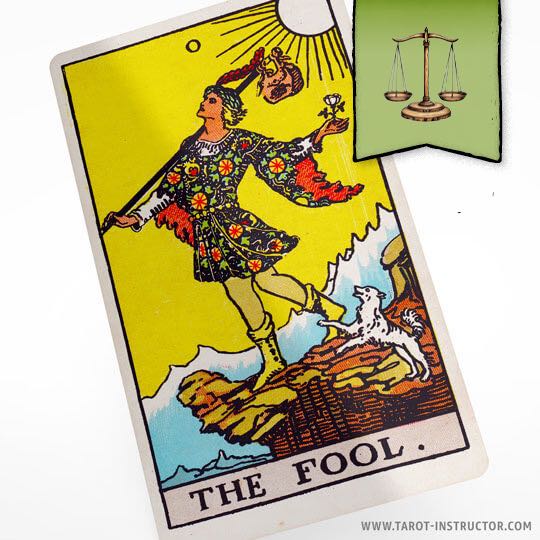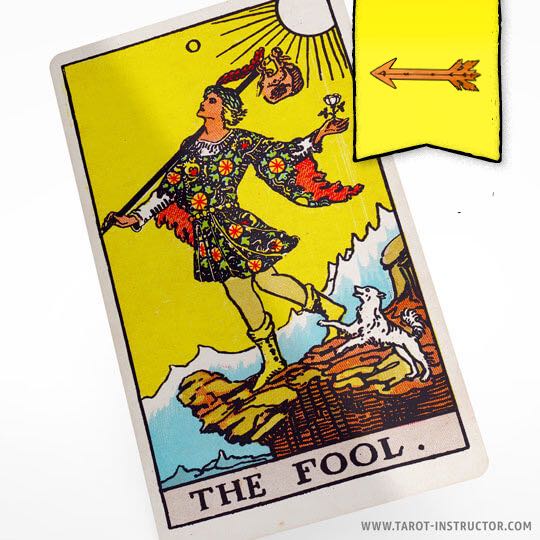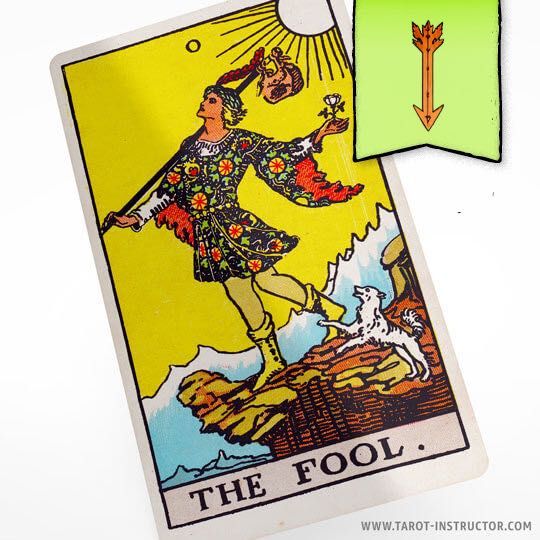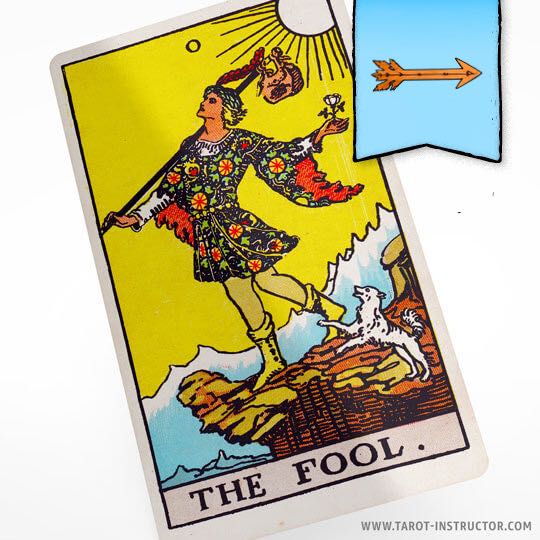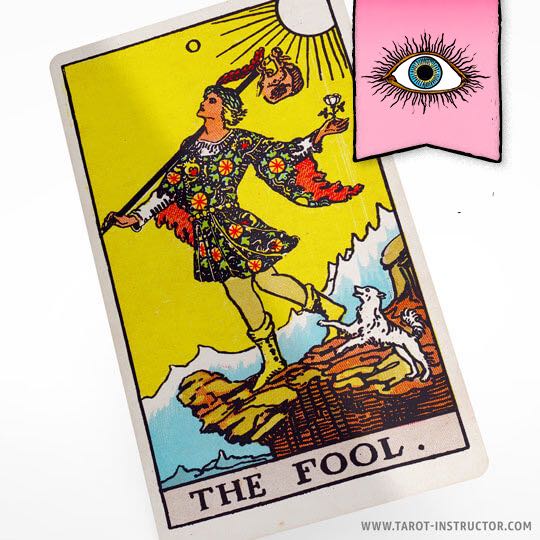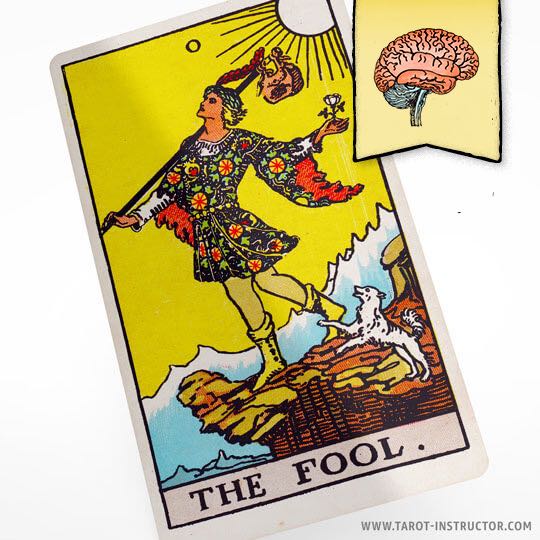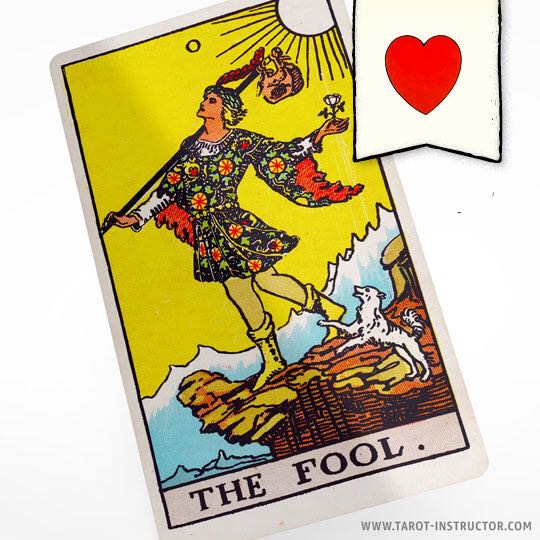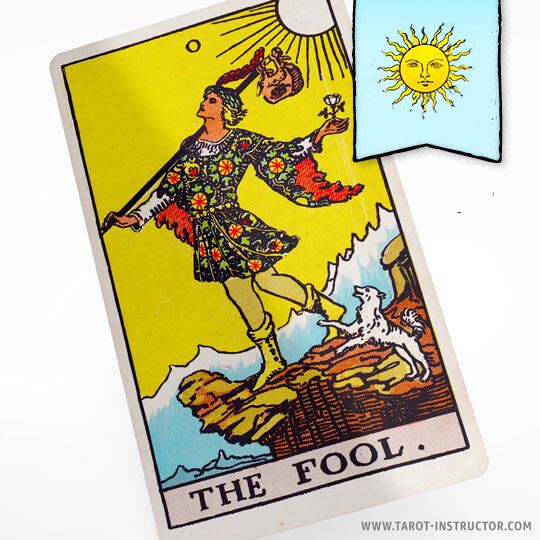The Fool tarot card features following symbolic elements
The Fool tarot card features following symbolic elements
The Fool as a love outcome suggests a fresh start, embracing spontaneity and a carefree spirit in relationships. The Cliff signifies the willingness to take risks and explore the unknown aspects of love. The Dog emphasizes the need for instinct and loyalty, highlighting the importance of trusting one’s intuition in romantic matters. The Rose represents purity and potential, embodying the beauty and promise of new love.
The Wand conveys creativity and energy, reflecting the drive to nurture and enhance the relationship. The Mountains indicate that challenges and obstacles may arise, but with determination, they can be overcome. The Sun embodies positivity and enlightenment, suggesting that despite the difficulties, the outcome is likely to be successful and fulfilling.
The Fool as advice
„Embrace new beginnings and trust the journey ahead.“
The Fool keywords upright
Spontaneity, Adventure, Innocence, Beginnings, Playfulness, Optimism.
The Fool keywords reversed
Carelessness, Recklessness, Naivety, Foolhardiness, Impulsiveness, No Direction.
The Fool card element
Aquarius
The Fool zodiac sign
Air
The Fool’s Journey – The Major Arcana
The Fool’s Journey is a profound narrative represented within the Rider-Waite Tarot’s Major Arcana, serving as a metaphor for personal growth, development, and the universal experiences of life. The journey of the Fool begins with card zero, The Fool, himself—a symbol of potential, spontaneity, and the beginning of a new adventure. This journey is not merely a sequence of cards; it is an allegorical representation of an individual’s path toward self-awareness, wisdom, and enlightenment.
The Fool: The Beginning of the Journey
The Fool card represents the raw essence of human experience, embodying innocence and freedom. He stands on the precipice of a new adventure, often depicted with a small dog by his side, symbolizing loyalty and instinct. This first step is both a leap of faith and a testament to the importance of embracing the unknown. The Fool’s willingness to embark on this journey reflects an openness to possibilities and the courage to face uncertainty—qualities essential for personal growth.
The Stages of Transformation
The subsequent cards of the Major Arcana illustrate the evolving stages of the Fool’s journey through various archetypal experiences and lessons:
- The Magician (I)– Represents the power of manifestation and resourcefulness. The Fool learns to harness his potential, understanding that he possesses the tools needed for change.
- The High Priestess (II)– Symbolizes intuition and the inner voice. Here, the Fool begins to explore the depths of his subconscious and seek wisdom within, learning the importance of reflection and inner guidance.
- The Empress (III) &
- The Emperor (IV) – The duality of nurturing and authority teaches the Fool about the balance of creation and structure. He learns the significance of love and stability in achieving his goals.
- The Hierophant (V)– Represents tradition and moral values. This card teaches the Fool the importance of connecting with societal norms and spiritual beliefs, guiding him in understanding community and belonging.
- The Lovers (VI)– Embodies relationships and choices. The Fool faces decisions that affect his path, learning about love, union, and the impact of choices on personal development.
- The Chariot (VII)– Signifies willpower and determination. The Fool learns to harness his inner strength and overcome obstacles through focus, signifying the triumphs of personal effort and control.
- Strength (VIII)– Represents courage and compassion. The Fool confronts challenges with grace, emphasizing the power of love over fear, nurturing resilience and self-acceptance.
- The Hermit (IX)– Symbolizes solitude and introspection. The Fool pauses to reflect on his experiences, seeking inner wisdom and understanding before proceeding on his path.
- Wheel of Fortune (X)– Highlights the cycles of life, karma, and destiny. The Fool learns that change is constant and that life’s ups and downs provide valuable lessons, emphasizing the importance of adaptability.
- Justice (XI)– Represents truth and fairness. The Fool grapples with moral dilemmas, understanding the significance of integrity and the consequences of his choices.
- The Hanged Man (XII)– Suggests surrender and new perspectives. The Fool learns the value of letting go and viewing situations from different angles, which is crucial for growth.
- Death (XIII)– Symbolizes transformation and endings. The Fool faces significant changes, understanding that endings often lead to new beginnings, reinforcing the cyclical nature of life.
- Temperance (XIV)– Represents balance and moderation. Here, the Fool learns to integrate different aspects of his life, cultivating harmony and patience.
- The Devil (XV)– Highlights temptation and materialism. The Fool confronts his fears and attachments, learning the importance of liberating oneself from unhealthy patterns.
- The Tower (XVI)– Represents upheaval and revelation. The Fool experiences sudden changes that shatter old beliefs, serving as a catalyst for renewal and deeper understanding.
- The Star (XVII)– Symbolizes hope, inspiration, and healing. After overcoming trials, the Fool finds solace and optimism for the future, reminding him of the beauty that exists in vulnerability.
- The Moon (XVIII)– Represents intuition, illusion, and the subconscious. The Fool learns to navigate the mysteries of life, embracing uncertainty while relying on inner wisdom.
- The Sun (XIX)– Embodies joy and positivity. The Fool emerges with clarity and confidence, celebrating self-acceptance and the realization of personal potential.
- Judgement (XX)– Represents rebirth and reflection. The Fool evaluates his journey, acknowledging past actions and the lessons learned, heralding a time of renewal and awakening.
- The World (XXI)– Concludes the journey. This card signifies completion, fulfillment, and the realization of the interconnectedness of all experiences. The Fool stands transformed, embodying the wisdom acquired through his journey.
The Journey as a Metaphor for Growth
The Fool’s Journey is a powerful allegory for personal development. Each card depicts vital lessons and stages of growth, reflecting individual experiences and challenges. This narrative encourages self-reflection and awareness, promoting the idea that life is an ever-evolving journey. Just as the Fool encounters various archetypes, every person too must navigate through relationships, challenges, and transformations.
By exploring The Fool’s Journey, individuals can recognize their growth patterns, internal struggles, and the cyclical nature of existence. This metaphor serves as a reminder that life’s journey is intricately woven with learning, opportunities for change, and the pursuit of self-discovery. Ultimately, The Fool’s journey is about embracing the unknown, seeking understanding, and celebrating the dynamic process of becoming.
Other meanings of the card The Fool:
Unlock the mysteries of tarot cards.
